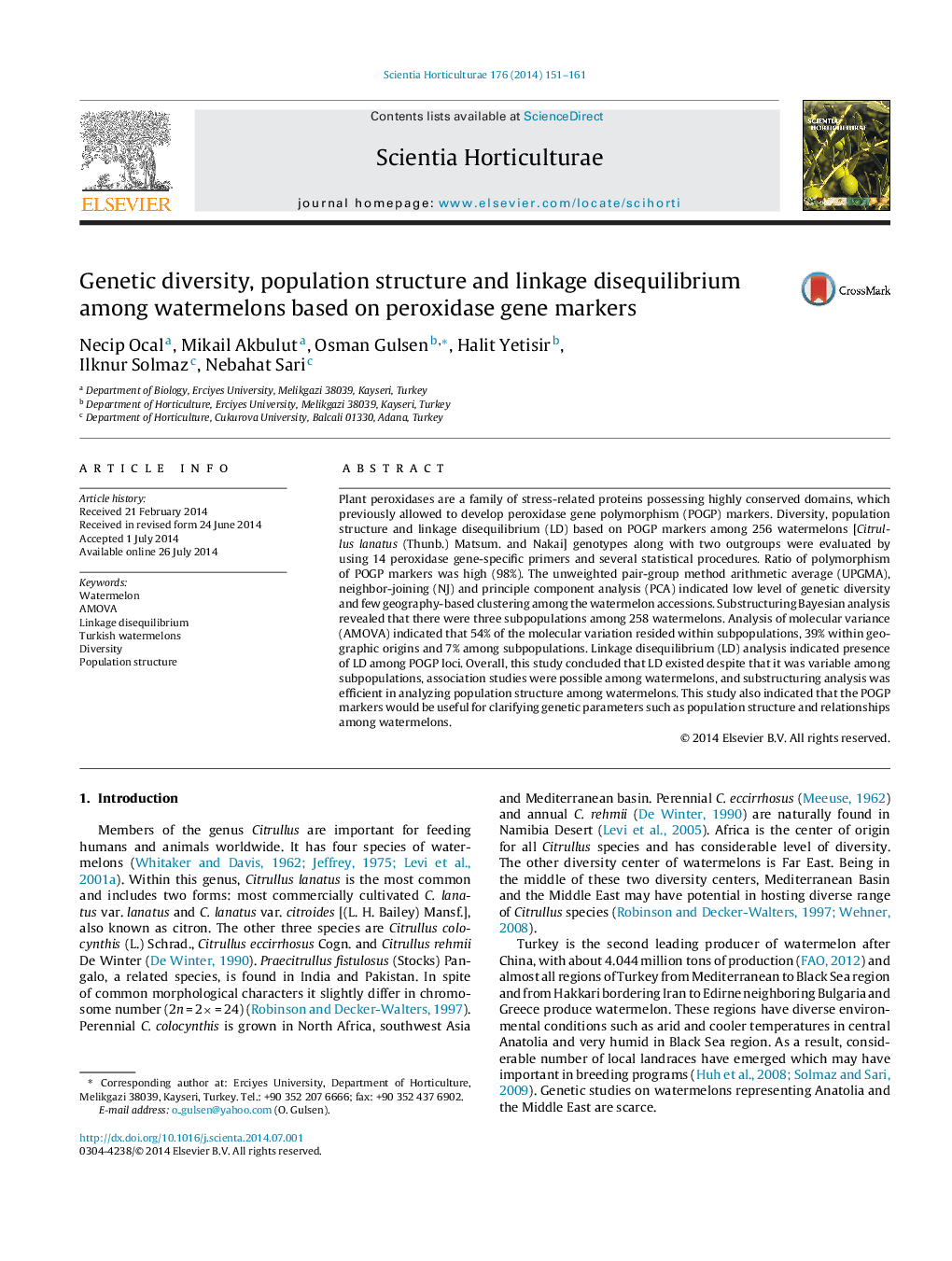| Article ID | Journal | Published Year | Pages | File Type |
|---|---|---|---|---|
| 4566749 | Scientia Horticulturae | 2014 | 11 Pages |
•Few genetic parameters were studied among watermelons.•UPGMA, NJ and PCA indicated low genetic diversity.•Substructuring analysis revealed three subpopulations.•AMOVA indicated 54% of molecular variation resided within subpopulations.•LD existed among POGP loci despite it was variable among subpopulations.
Plant peroxidases are a family of stress-related proteins possessing highly conserved domains, which previously allowed to develop peroxidase gene polymorphism (POGP) markers. Diversity, population structure and linkage disequilibrium (LD) based on POGP markers among 256 watermelons [Citrullus lanatus (Thunb.) Matsum. and Nakai] genotypes along with two outgroups were evaluated by using 14 peroxidase gene-specific primers and several statistical procedures. Ratio of polymorphism of POGP markers was high (98%). The unweighted pair-group method arithmetic average (UPGMA), neighbor-joining (NJ) and principle component analysis (PCA) indicated low level of genetic diversity and few geography-based clustering among the watermelon accessions. Substructuring Bayesian analysis revealed that there were three subpopulations among 258 watermelons. Analysis of molecular variance (AMOVA) indicated that 54% of the molecular variation resided within subpopulations, 39% within geographic origins and 7% among subpopulations. Linkage disequilibrium (LD) analysis indicated presence of LD among POGP loci. Overall, this study concluded that LD existed despite that it was variable among subpopulations, association studies were possible among watermelons, and substructuring analysis was efficient in analyzing population structure among watermelons. This study also indicated that the POGP markers would be useful for clarifying genetic parameters such as population structure and relationships among watermelons.
